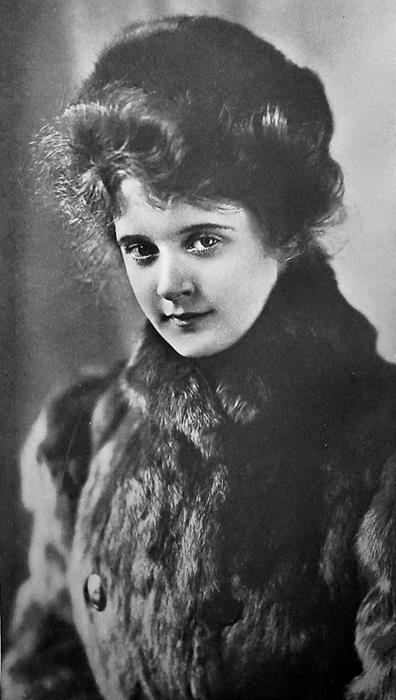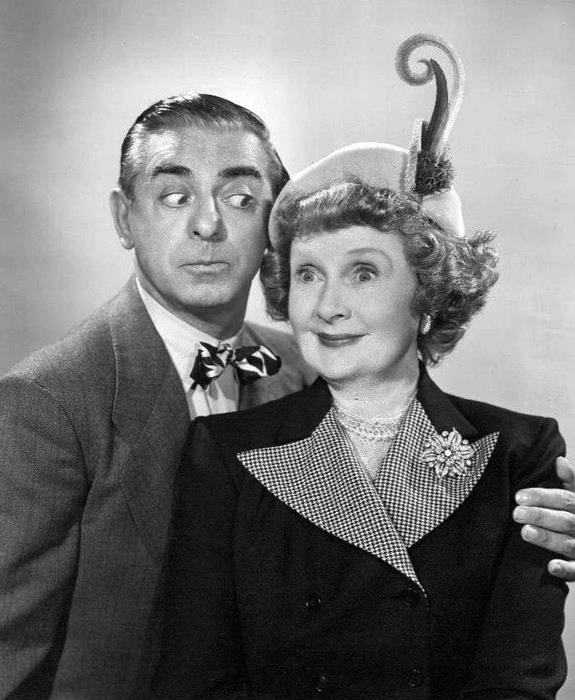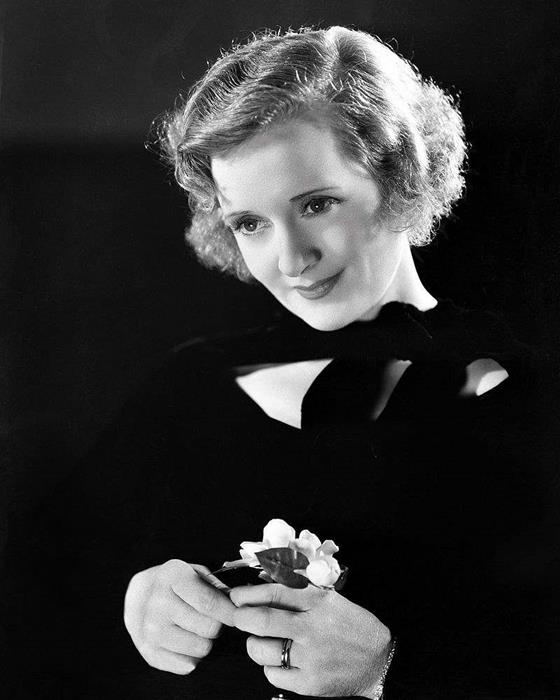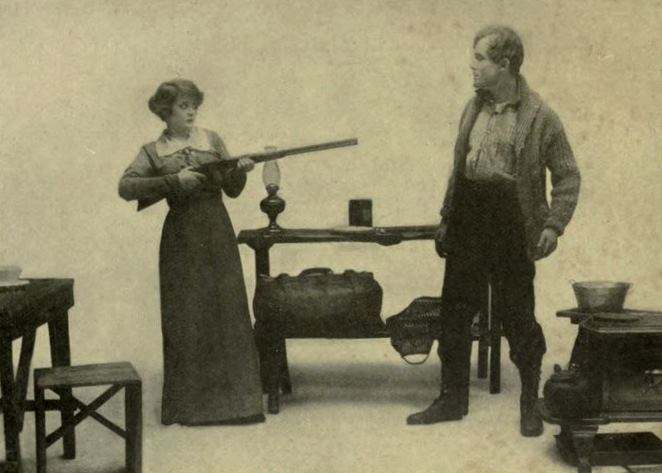Billie Burke was a special star in the movie world, best known for her role as the kind and gentle Glinda the Good Witch in the famous film “The Wizard of Oz.” Born in 1884, her journey to Hollywood stardom was filled with interesting twists and turns.
Before she became a household name, Billie graced the stage on Broadway and even dabbled in silent films. Her transition to speaking roles in movies marked a new chapter in her career, leading to her unforgettable performance in “Oz.”
In this article, we’ll explore 20 fascinating facts about Billie Burke that showcase her talent, her life beyond the silver screen, and how she became a beloved figure in cinema history. Let’s take a closer look at the life of Oz’s bewitching Billie Burke and discover what made her such a memorable part of Hollywood’s golden age.
1. Birth and Early Years
Billie Burke was born on August 7, 1884, in Washington, D.C., into a family with deep theatrical roots. Her father was a well-known circus clown, and her mother was a singer, immersing Billie in the world of performing arts from a very young age. This early exposure to the entertainment industry played a pivotal role in shaping her aspirations and career path. Growing up in an environment filled with creativity and performance, Billie developed a passion for acting that would define her future.
2. Theatrical Roots
The influence of Billie’s family cannot be overstated in her journey to becoming an actress. With her father’s involvement in the circus and her mother’s musical talents, Billie was introduced to the stage’s magic early on. This unique upbringing provided her with a broad perspective on performance art, from dramatic acting to musical expression. Her parents’ careers not only inspired her but also offered her a firsthand look at the dedication and hard work required to succeed in the entertainment world. This foundation was crucial in developing her skills and understanding of the industry.
3. Broadway Debut
Billie’s professional debut came in 1903, when she was just 19 years old, in the Broadway play “The School Girl.” Her performance was met with critical acclaim, quickly establishing her as a promising young actress in the theater community. This success on Broadway was only the beginning, as she went on to star in numerous other stage productions, captivating audiences with her charm, wit, and emotional depth.
Billie’s ability to connect with the audience and bring complex characters to life set her apart in the competitive world of theater. Her success on Broadway not only solidified her reputation as a talented actress but also paved the way for her transition to film, where she would achieve even greater fame.
4. Silent Films
After establishing herself as a force to be reckoned with on Broadway, Billie Burke made the leap to the silver screen during the era of silent films. This transition marked a new chapter in her career, allowing her talents to reach a broader audience. Billie’s foray into silent cinema began in the 1910s, a time when the film industry was burgeoning, and silent films were the pinnacle of entertainment.
Her early roles in silent films capitalized on her expressive acting skills, which translated beautifully to the screen without the need for spoken dialogue. Billie’s ability to convey complex emotions and narratives through her facial expressions and body language made her a natural fit for silent cinema.
5. First Talkie
The introduction of “talkies,” films with synchronized sound, represented a significant turning point in the film industry and in Billie Burke’s career. As the industry transitioned from silent films to talkies in the late 1920s, many silent film stars found it challenging to adapt. However, Billie embraced this new era with enthusiasm and skill.
Her first talkie came at a time when the ability to act with both voice and physical expression was paramount. Billie’s clear, melodic voice and precise diction, honed on the stage, proved to be significant assets. Her successful transition into talkies allowed her to continue captivating audiences, now with the added dimension of her voice.
6. Casting as Glinda
Billie Burke’s casting as Glinda the Good Witch in “The Wizard of Oz” came at a pivotal moment in her career. By the time “The Wizard of Oz” began production in the late 1930s, Billie had successfully transitioned from stage to silent films and had embraced the era of talkies, establishing herself as a versatile and respected actress. Her portrayal of Glinda was influenced by her ability to project warmth, kindness, and a sense of ethereal beauty—qualities that were intrinsic to her character Glinda.
The producers sought an actress who could embody the Good Witch’s motherly and benevolent nature, and Billie’s previous roles, coupled with her distinctive voice and graceful demeanor, made her an ideal choice. Her casting was a testament to her acting range and her reputation in Hollywood.
7. Behind the Scenes
Filming “The Wizard of Oz” was an ambitious undertaking for its time, and Billie Burke’s experience on set was filled with memorable moments. One of the most fascinating aspects of her role was the elaborate costume and makeup required to transform her into Glinda. Her gown was designed to sparkle and shine, embodying the magical presence of the Good Witch, while her crown and wand became iconic symbols of her character.
Despite the long hours and the challenges posed by the special effects and makeup, Billie maintained a professional and positive demeanor, contributing to the camaraderie among the cast. Her interactions with the younger actors, including Judy Garland, were nurturing and supportive, echoing her character’s protective nature in the film.
8. Legacy of Glinda
Billie Burke’s role as Glinda the Good Witch left an indelible mark on her career and the legacy of “The Wizard of Oz.” Glinda’s character, with her memorable entrance into a bubble and her wise, comforting words, became one of the film’s most beloved figures. For Billie, Glinda represented one of her most iconic roles, endearing her to generations of viewers and cementing her place in Hollywood history.
The positive reception of her character contributed to the film’s enduring popularity, making it a classic piece of American cinema. Billie’s portrayal of Glinda has been celebrated for its warmth, wisdom, and charm, qualities that have made the character a symbol of goodness and hope.
9. Marriage to Florenz Ziegfeld
Billie Burke’s personal life, particularly her marriage to Florenz Ziegfeld, the famous Broadway impresario and producer of the Ziegfeld Follies, played a significant role in shaping her career. They married in 1914, and their union was not only a partnership of love but also one of creative collaboration.
Ziegfeld’s influence was immense in the entertainment world, and his support and connections undoubtedly opened doors for Billie, though her talent was the true key to her success. However, their marriage was also marked by its challenges, including Ziegfeld’s financial troubles and the pressures of their respective careers. Despite this, their relationship remained strong until Ziegfeld’s death in 1932, a testament to their deep bond.
10. Life During the Great Depression
The Great Depression posed significant challenges for many, including Billie Burke and her family. Following Florenz Ziegfeld’s death in 1932, Billie faced financial difficulties exacerbated by the economic downturn. Ziegfeld’s death left her with debts, and the collapse of the stock market further strained her finances. This period of hardship motivated Billie to work tirelessly in both film and theatre to pay off her debts. Her resilience during these trying times not only helped stabilize her financial situation but also led to some of the most memorable performances of her career, including her role in “The Wizard of Oz.”
11. Philanthropy and Later Life
Beyond her accomplishments on stage and screen, Billie Burke was also known for her contributions to the arts and philanthropy. She was passionate about supporting aspiring artists and was involved in various charitable endeavors, especially those related to the theater community. In her later years, Billie continued to act, though less frequently, and dedicated more time to her philanthropic efforts.
She also enjoyed a quieter life, reflecting on her illustrious career and the changes she had witnessed in the entertainment industry. Her legacy is not just that of a talented actress but also of a compassionate individual who used her success to give back to the community that had embraced her. Billie Burke passed away in 1970, leaving behind a rich legacy of performance and generosity that continues to inspire.
12. Broadway and Beyond
Before stepping into the magical world of Oz, Billie Burke enjoyed a flourishing career on Broadway, gracing the stage with her presence in a variety of productions. Her Broadway career spanned several decades, with notable performances in plays such as “Love Watches” (1908), “Suzanne” (1910), and “The Land of Promise” (1913), showcasing her versatility as an actress.
After her iconic role as Glinda, Billie returned to the stage, continuing to perform in both comedic and dramatic roles. Her stage work, both before and after “The Wizard of Oz,” highlighted her range and depth as an actress, earning her critical acclaim and the adoration of audiences.
13. Filmography Highlights
Billie Burke’s film career was extensive, with over 80 films to her credit. Beyond “The Wizard of Oz,” she delivered memorable performances in several other key films. In “Dinner at Eight” (1933), she portrayed the scatterbrained and socially ambitious Millicent Jordan, a role that showcased her comedic talents. “Topper” (1937) and its sequels saw her in the role of Clara Topper, further cementing her status as a versatile actress capable of handling both comedic and dramatic roles.
Other notable films include “Father of the Bride” (1950), where she played the doting mother Dorothy Banks, and its sequel “Father’s Little Dividend” (1951). These films, among others, demonstrate Billie’s ability to enchant audiences across a variety of genres.
14. Television Appearances
As television began to emerge as a new medium for entertainment in the early days of broadcasting, Billie Burke was among the pioneering film stars who embraced it. Her television appearances included guest roles on popular shows of the time, allowing her to reach into the homes of American families in a new and intimate way.
While her work on television was not as extensive as her film and stage careers, it nonetheless contributed to her legacy as a versatile performer. Her appearances on TV further solidified her status as a beloved figure in American entertainment, demonstrating her adaptability and continued relevance in the changing landscape of the entertainment industry.
15. Academy Award Nomination
Billie Burke’s illustrious career in acting was recognized by the Academy of Motion Picture Arts and Sciences with a nomination for “Best Supporting Actress.” This prestigious nomination was for her role in the film “Merrily We Live” (1938), in which she played the scatterbrained but lovable Mrs. Emily Kilbourne.
This performance showcased Burke’s comedic timing and her ability to bring depth and charm to her characters, qualities that made her stand out in Hollywood. Although she did not win the award, the nomination itself was a testament to her skill and versatility as an actress, as well as her enduring impact on the film industry.
16. Other Honors
While Billie Burke is most widely recognized for her Academy Award nomination, her contributions to film, theater, and television have been acknowledged in other ways throughout her career. She was celebrated within the industry for her work ethic, professionalism, and the legacy she created. Beyond formal awards, Burke’s lasting impact on the entertainment world can be seen in the continued admiration for her work, the influence she has had on generations of actors, and the iconic status of her most memorable characters.
17. Fashion Influence
Billie Burke was not just a celebrated actress but also a style icon of her time, known for her elegant and distinctive fashion sense. Her personal style, characterized by sophistication and a touch of whimsy, made her a trendsetter both on and off the screen. During the height of her career, Burke’s wardrobe choices reflected the glamour of Hollywood’s Golden Age, often featuring luxurious fabrics, intricate detailing, and flattering silhouettes.
Her ability to blend classic elegance with a sense of playfulness endeared her to the public and influenced fashion trends of the era. Burke’s fashion choices often mirrored the roles she played, contributing to her on-screen persona and enhancing her characters’ believability and charm.
18. Costumes in Oz
The significance of Billie Burke’s costumes in “The Wizard of Oz” cannot be overstated. As Glinda the Good Witch, her attire was designed to convey an ethereal and majestic presence, perfectly capturing the essence of her character. The iconic bubble dress, with its layers of pink tulle and shimmering sequins, along with her tall crown and magic wand, became one of the most memorable looks in film history.
The costume’s design not only highlighted Burke’s natural grace but also contributed to the visual storytelling of the movie, enhancing the fantastical elements of Oz and setting Glinda apart as a figure of goodness and power. The impact of her costume in “The Wizard of Oz” extended beyond the screen, inspiring fashion designers and becoming a symbol of magical elegance.
19. Influence on Future Generations
Billie Burke’s legacy in the entertainment industry is profound, influencing countless actresses and films long after her final curtain call. Her nuanced performances, which seamlessly blended comedy with heartfelt emotion, set a benchmark for character acting in Hollywood. Burke’s portrayal of Glinda the Good Witch in “The Wizard of Oz” has become a masterclass in creating memorable and beloved characters, inspiring actresses to bring depth and warmth to their roles.
Her ability to convey complex emotions with grace and a sense of humor has been emulated by generations of performers. Beyond specific acting techniques, Burke’s career longevity and versatility across stage, film, and television offer a blueprint for sustaining success in the ever-evolving entertainment landscape.
20. Remembering Billie Burke
Today, Billie Burke is remembered not only for her iconic role in “The Wizard of Oz” but also for her contributions to the arts and her pioneering spirit. While there are no extensive physical memorials in her name, her legacy is preserved through the enduring popularity of her films, especially “The Wizard of Oz,” which continues to enchant audiences around the world.
Tributes to Burke often highlight her versatility as an actress and her influence on the film industry, including acknowledgments in documentaries, film history books, and retrospectives celebrating Hollywood’s Golden Age. Film festivals and classic movie channels frequently honor her work, introducing her performances to new generations of fans.
Conclusion
Billie Burke’s journey through Broadway, silent films, and talkies, culminating in her unforgettable role as Glinda the Good Witch, showcases her versatility and enduring charm. Her influence on fashion, her groundbreaking performances, and her contributions to the arts have left an indelible mark on Hollywood. Today, Billie Burke is remembered and celebrated as a true icon of cinema whose legacy continues to inspire actors and enchant audiences around the world.





